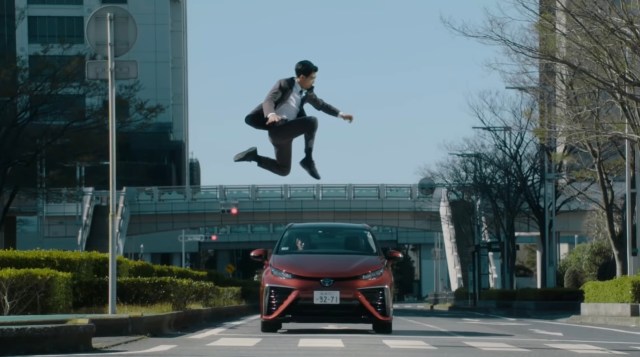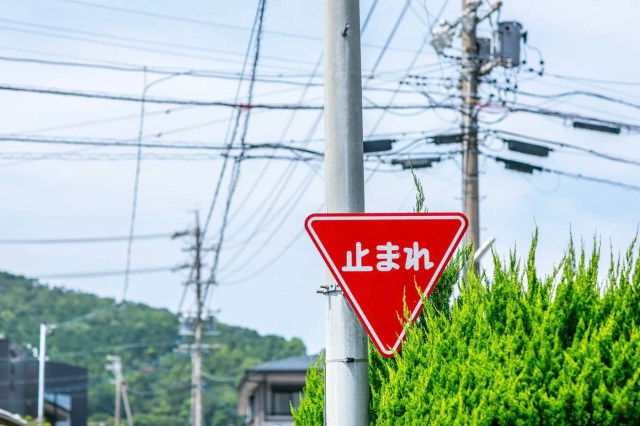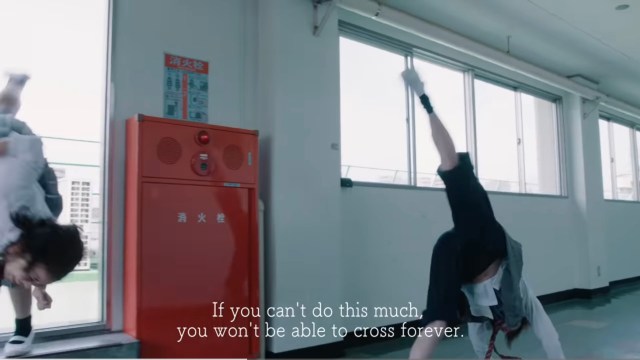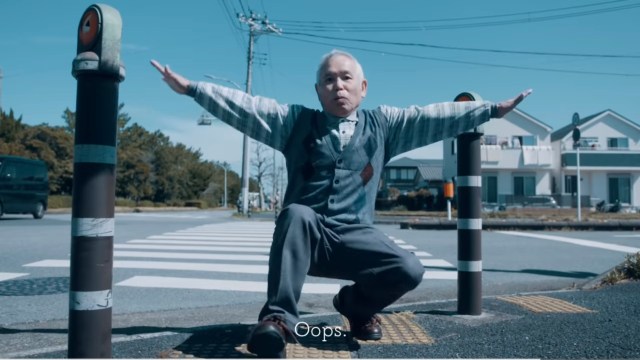
Is there anything ninja can’t do?
Since the ink on my Japanese driver’s license has yet to dry, I still have all the lessons ingrained from the rather grueling one year of studying and testing. So, while I’m still instinctively driving like a model product of the Osaka Prefectural Police, it’s even more glaringly obvious that a vast majority of drivers ignore a solid 50 percent of the rules and procedures I was taught were mandatory.
▼ I mean, what does “stop” mean really? The Earth is constantly spinning so we are never truly “stopped”, are we?
 Image: Pakutaso
Image: Pakutaso
A prime example is pedestrian crossings. The rule, as I was taught, was that only in the event that no people are even in the vicinity of the crosswalk can you drive through at normal speed. In the case that a person doesn’t appear to be crossing but is moving along the same street as you near a crosswalk, you should reduce your speed enough that you can come to a sudden stop, which is generally said to be under 10 kilometers (6 miles) per hour but depends on the vehicle and conditions. And when a person is stopped at either end of the cross walk, you must stop your vehicle and wait for them to either cross or indicate to you that they are not crossing.
That was a mouthful, but it really is much easier done than said. And yet every time I’ve done it in real life, the pedestrian looks at me like a waiter whom I tipped $100 for a cup of coffee. What I did was certainly nice and appreciated but surprisingly out of step with conventional behavior.
This is because when using pedestrian crosswalks in many parts of Japan, you’d be wise to not expect the car to stop. In fact, a 2021 survey found that the chances of a car coming to a stop for you at a crosswalk is 30.6 percent based on the national average.
▼ News report from last year showing many cars not stopping, but those interviewed said things have been improving
The worst prefecture for this troubling trend is Okayama, where only 10.3 percent of cars stopped for pedestrians to cross. No prefecture wants to have the country’s crummiest drivers, so the Okayama branch of the Japan Automobile Federation, along with local businesses, tried out some awareness-raising campaigns to remind drivers to be kind and stop.
The most notable one was a video released by Toyota dealership Okayama Toyopet, titled Road to Ninja. This one-and-a-half minute short plays on an absurd stereotype that all Japanese people are ninjas but with the twist that in Japan you have to be a ninja just to cross the street safely.
In the video, students can be seen training in the importance of running fast and jumping high and one schoolgirl says matter-of-factly that you can’t cross the road here unless you’re a ninja.

Scenes also show people of all ages doing cartwheels and hurdling over zebra crossings to narrowly avoid the cars which stop for nothing. At the end, an elderly man deftly flips across the street. However, just after sticking the landing, he loses his balance and falls backwards into the street just as a car approaches.

The video then hits us with the sobering statistic that 32 percent of pedestrian crossing fatalities occur while the pedestrian is using a crosswalk. In other words, 32 percent of pedestrian deaths were caused by the driver ignoring the rules and not coming to a stop when a person is present.
It was a clever video that presented an important message with humor and got over 300,000 views since it was released last. But far more impressive is that since its release, Okayama traffic manners have improved drastically.
Last year’s survey by the JAF saw a promising improvement in crosswalk stopping from 30.6 percent to 39.8 percent nationwide. Among those results, Okayama shot up from last place in the country to 49 percent which is well above average. This left Tokyo in last place with 27.3 percent but that’s still up from 12.1 percent the year before, so they deserve a pat on the back too. Meanwhile, Nagano’s been crushing it with an over-80 percent rate for the past two years.
There’s no evidence to say that Okayama’s stellar improvement is the direct result of the video, but it certainly was the awareness campaign with the biggest impact during that year. In the end, it doesn’t really matter how we arrive at a society of more sensible driving practices, just as long as we get there and stop at crosswalks along the way.
Source: TV Asahi News, YouTube/Toyopet Okayama, JAF
Images: YouTube/Toyopet Okayama (Unless otherwise noted)
● Want to hear about SoraNews24’s latest articles as soon as they’re published? Follow us on Facebook and Twitter!

No hay comentarios:
Publicar un comentario